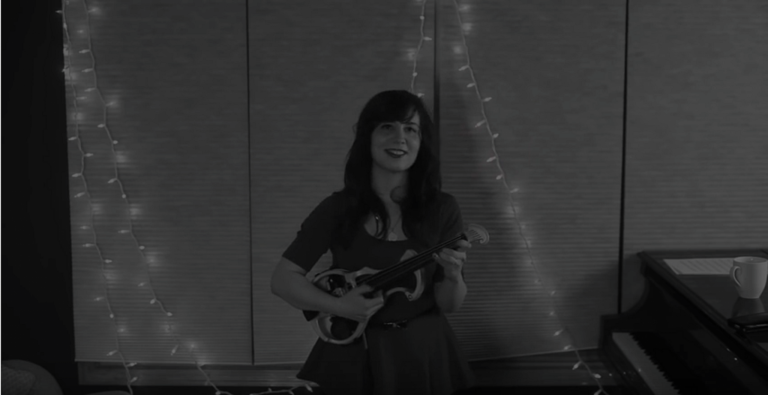
Budget cuts to the arts are depriving students around the world of a creative education. In Los Angeles alone – the second-largest school district in the U.S. – K-12 institutions are desperately trying to enlist Hollywood studios to ‘adopt’ schools and provide students with equipment, mentorships and training as a way to reverse the layoffs that have decimated the curriculum.
In the majority of K-12 schools across the U.S. and the world, academic provisions are heavily focused on Science, Technology, Engineering and Mathematics (STEM) programmes, meaning performing arts pathways are increasingly pushed aside. The truth is that when budgets are cut, music provisions are often the first to go.
But violin-virtuoso Kaitlyn Hova has an innovative idea that uses STEM to save our fading music programmes…
Why is it that when school districts need budget cuts, they always go straight for the arts programs?
— cassie wilson (@CassieTheWilson) March 7, 2016
…And it really is a good one!
Kaitlyn’s professional career as a violinist kicked-off when she was just thirteen. Her talent saw her tour all over America, and in order to book more gigs, she created her own website, inspiring a new passion for computer programming. But it wasn’t until she began her pursuit of a Music Theory degree from Berklee College of Music that Kaitlyn discovered she had synesthesia, a neurological phenomenon that involuntarily connects one sensory pathway to another.
Her condition encouraged her to undertake a separate academic endeavour, transferring from Music in Boston to Neuroscience at the University of Nebraska in her hometown of Omaha. Upon graduation, Kaitlyn enrolled at Omaha Code School with her husband, Matt Hova, and created the synesthesia network called “Facebook for people with Synesthesia”, allowing her to collect data for her epidemiological studies.
But in 2014, Kaitlyn and Matt began playing around with 3D printers, first printing simple shapes and stationary, until they eventually printed a full-scale musical instrument.
The idea occurred after the couple stumbled across David Perry’s Instagram post, F-F-Fiddle, in which he had created a functional violin using a 3D printer. Inspired to produce their own, the couple created over 60 failed models in the following 18-months, until they eventually developed their own affordable model which they called the Hovalin 2.0.
Now Kaitlyn and Matt want to use their creation to save school music programmes.
The idea is that young STEM students can print their own instrument in class using the latest 3D technology, preventing the loss of K-12 music classes with printed instruments that are free to produce. The Hova’s are currently working with U.S. school districts to raise enough money to put 3D printers in schools all over the country – next stop, all over the world!
“After making the [Hovalin], we realised it could be a really wonderful thing to try to help out with music programmes,” Kaitlyn told Upworthy. “Maybe they have a good STEM programme going on, but their music program is losing funding.
Husband and wife Matt and Kaitlyn Hova design a fully functional 3D printed acoustic violin https://t.co/ppcDIsaxzH pic.twitter.com/CXhqBUZicj
— Wevolver (@WevolverApp) March 17, 2016
“It’s so empowering for kids to see they can make something out of software,” she said. “I think it makes it more accessible.”
The best part about the Hova’s solution is that while being rife with innovation and creativity, it is also completely affordable. Plus, a recent study demonstrates that children benefit just as much from music training as they do from classes like maths and science, highlighting the boundless potential of Kaitlyn’s 3D-printed solution.
Watch this space for the Hovalin, coming to a school near you!
Additional reporting by Upworthy.
Image via Youtube/Kaitlyn Hova.
Liked this? Then you’ll love these…
VIRAL: College Professor’s act of kindness makes him an Internet Hero
VIRAL: Barber promises 9-year-old free haircuts for life if he gets straight A’s







